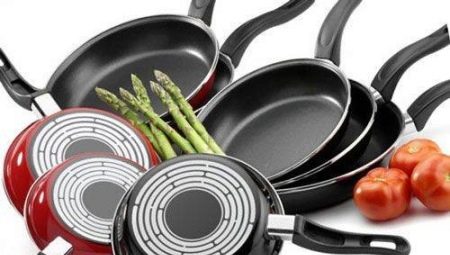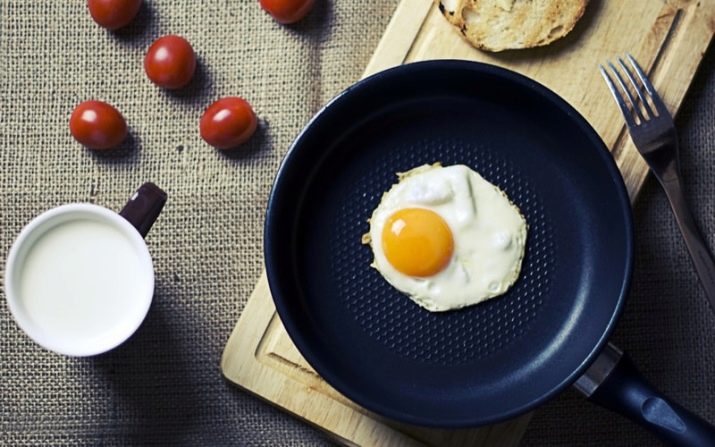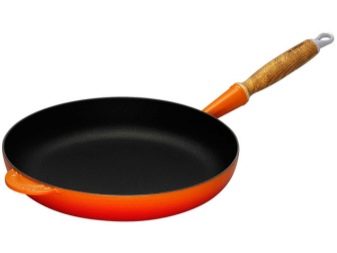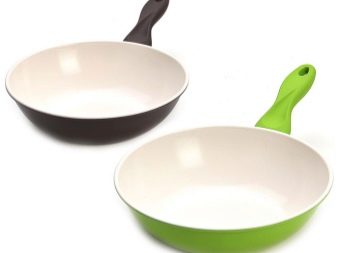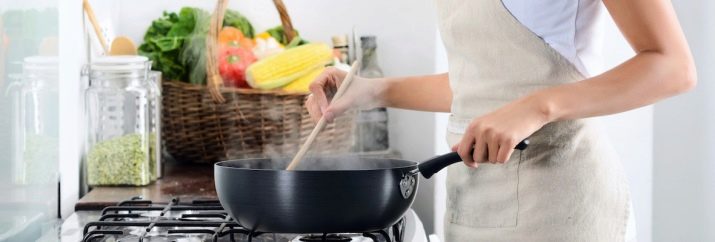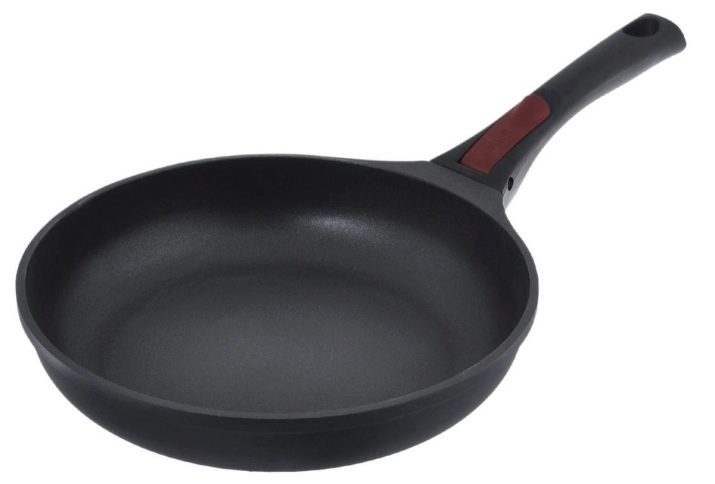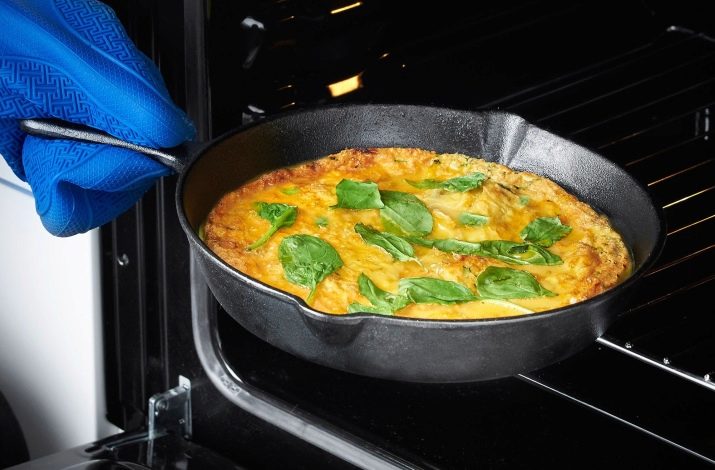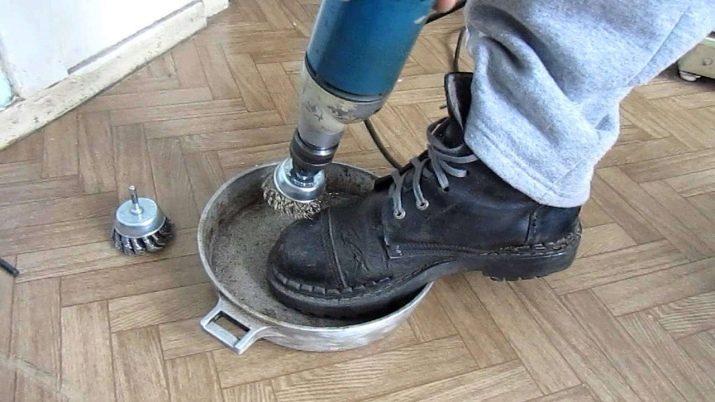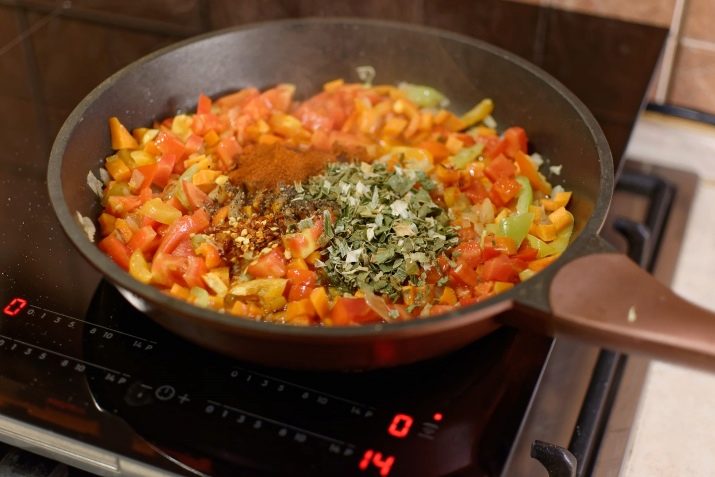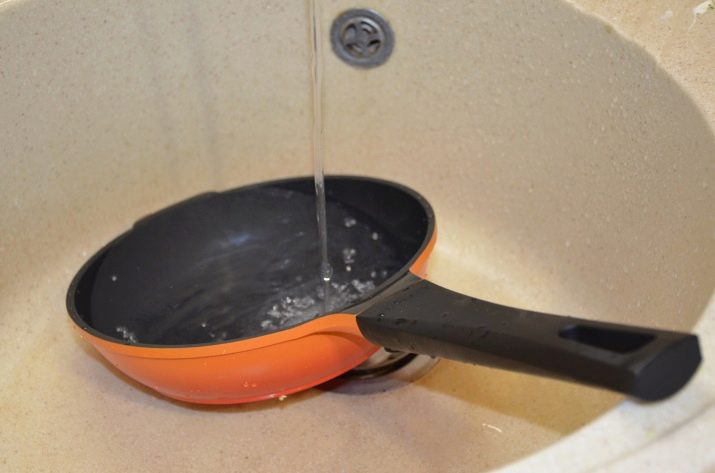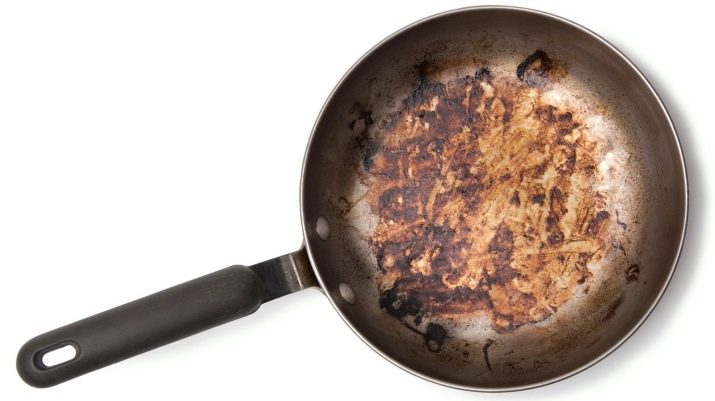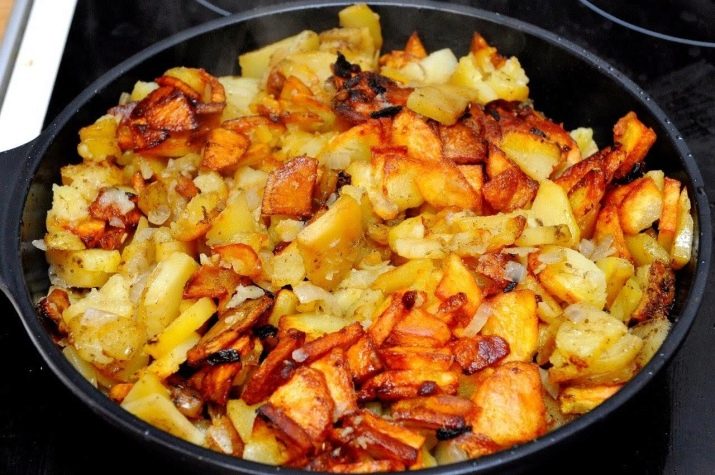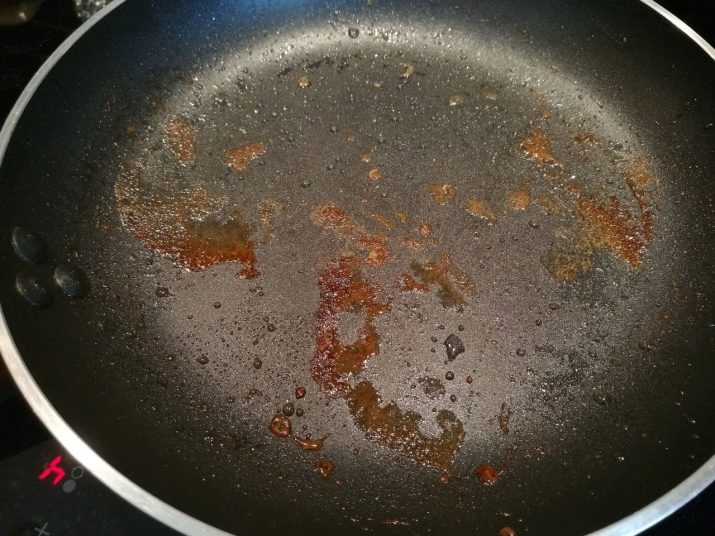A frying pan - if not the queen of the kitchen, then certainly the valuable and important "character" of the kitchen space. Properly chosen high-quality frying pan will last more than one year, and the owners will not suffer from burnt dishes and prolonged cleaning of utensils. Often, the choice falls on Teflon pans, about them and talk in our article.
Description
Teflon pan is a metal dish with a special non-stick coating. The coating of the teflon pan itself is what this purchase is valued for. Thanks to its features, the food does not stick, oil consumption is reduced to a minimum, which in itself makes food healthier.
However, if you compare the pan with a Teflon coating and ceramic dishes, the latter will benefit in environmental performance. The fact is that if you damage the Teflon during cooking, toxic substances may be released when the coating is heated. Of course, the developers were worried about this and began to make the dishes strong, protected from damage, but minimal risks remain.
What is Teflon? By its chemical properties, it is similar to plastic, but it is more elastic and slips better. Teflon is used in different areas - in the manufacture of paper products, plastic packaging, clothing.
Teflon pans have an important advantage - in terms of weight, they are lighter than ceramic and, of course, lighter than cast iron.
This is the so-called light dishware, which means that fast dishes are supposed to be cooked on it. Not pilaf or roast, but omelets, fritatou, pancakes, various grilled dishes, etc.
Advantages and disadvantages
The teflon better ceramics, we have already said - weight. At the price it too can favorably differ. But this is not convincing to many buyers: they heard that Teflon pans are harmful and dangerous, which means that it is better to stay away from them. Judge for yourself - the table puts everything in its place.
Pros and cons of teflon pans | |
+ | - |
Low weight | You can not do without cooking oil, although a good frying pan requires a little |
Easy handling | Thin pans are deformed during prolonged heating |
Fast heating | Composition has substances with toxic characteristics (potential harm) |
Not afraid of temperature jumps | The surface of the pan is sensitive, scratches easily appear |
Will be suitable for any plates and ovens (the main thing that the handle was located) | It is easy to clean them, but some owners habitually use abrasives, which quickly disables the dishes |
How to choose?
If you come to a store specializing in kitchen utensils and dishes, the range of models is usually large. Eyes scatter, and often it is like this: you go to buy one pan, and you get a whole set.
So go to the store prepared, with an understanding of how to find the very model and do not lose money with the price.
Tips on choosing a teflon pan.
- Weight. We'll have to find a compromise - the perfect balance between weight and functionality. If the pan like a fluff, how many dishes can you cook on it? The lightest models, as a rule, do not differ in durability and strength, and the deformation of the coating can be relatively fast.
- Bottom thickness The size of the bottom layer affects the strength of the grid when heated. The thicker the bottom, the lower the risk of deformation of the griddle.
- Pen type Can be cast or bolted.The first option is definitely safer. If the handle is bolted, they will loosen over time. There are also models with a removable handle: they are convenient for use in the oven, as well as when serving dishes on the table directly in the pan (which is appropriate, for example, if you decide to have a dinner in a rustic style).
- Coating. Finally, it's time to look at him. There should be no visible damage in the new pan. Hillocks, dents, "bald spots" - a factory defect or deformation during transportation and storage. A single layer of the surface ensures uniform heating and, no less importantly, the quality of the cooked dish (the release of microparticles of damaged Teflon is dangerous for health).
Service life and operating rules
How long can a teflon pan be used? It depends on the intensity of use. If you cook with it every day, even the highest quality and expensive frying pan will retire in two years. And it's not so important whether you fry, stew or put it in the oven. How you use the dishes, carefully or not, according to safety rules or neglecting them, also depends on the life of the pan.
After buying a new griddle, wash it with warm water and a mild dishwashing detergent. Dry the dishes well. And roast it with salt and oil - the top of madness! This old-fashioned way for teflon pans is destructive.
You must adhere to the following rules of operation.
- Metal accessories to control the cooking can not be used exactly - the blades and similar structures should be silicone or wood.
- If the surface is already losing uniformity, scratches have formed on it, the layer can be considered partially damaged, therefore after washing and drying, lubricate the inner surface with a pair of droplets of linseed oil, the remnants of which are well cleaned with a paper napkin.
- You can put the pan in the oven, but do not exceed the temperature in the oven (the maximum heating temperature is indicated on the package of dishes). Both handles and other accessories should also be prepared for heat exposure.
Never wash Teflon dishes with abrasives. Do not rub them with prickly sponges, do not make special efforts when rubbing the bottom.
How to restore coverage?
Restoring the deformed coating of a Teflon pan is not the most rewarding operation. Professional restoration, if you refer to it, will cost so much that it is wiser to buy a new frying pan. Judge for yourself: the “resuscitation” of dishes is to clean the walls and bottom with a drill, after which the dishes are polished. After that, she says goodbye to her anti-stick properties. But to say that all polymer particles will be removed from the surface is also impossible.
If the food on a teflon pan is already burning, if you see scratches, then you should not try to cover it with something new (this may be incompatible with cooking). The application of any chemical composition is dangerous, only masters can do this. You, as already mentioned, can only lubricate the pan with linseed oil in a very modest amount.
It is easier to establish the correct care of the new pan and to teach all family members to do so. But even with the most delicate handling, do not flatter yourself: two or three years is a period after which the pan needs to be replaced.
Care
It is easy to care for Teflon-coated dishes, but certain system and duty are needed.
Consider the 9 rules of care for a teflon pan.
- Knives, spoons and forks, as well as metal shovels - the main taboo for such dishes. Do not sign her sentence in one lazy step, work hard to ensure that silicone spatulas are always within the kitchen area. Do not turn the pancakes with a fork, even if it seems to you that you are doing this delicately.
- Seasoning coarse, salt crystals - this is what Teflon coating dishes "perceives" as an abrasive.Therefore, it is believed that in such a dish is to stew and cook, and not to fry.
- Try not to put a hot griddle under a stream of cold water. Quiet attitude to temperature differences - it is not ready for such stress for a thin production coating.
- Wash dishes need a soft sponge or cloth made from natural materials. Clean the Teflon with a metal brush or washcloth, of course, impossible.
- Do not leave fried food in the pan after cooking. Burnt food - the enemy of dishes.
- Some models of Teflon pans can be loaded into the dishwasher, if the manufacturer permits this.
- Buy dishes with a thermal spot (temperature indicator). So you save her from the danger of overheating. Once the heat point has become bright, it's time to reduce the temperature.
- Even if the manufacturer writes that the service life of the dishes is 6 or even 10 years, this does not apply to the frequent use of utensils. If you cook scrambled eggs on Teflon every morning, and in the evening you also fry potatoes or pancakes in a pan, 2 years of service will be an enviable period for such intensive use.
- If fatty food dries out in a pan, it is dangerous for Teflon. Even if just a thin layer of fat without residues of food remained uncleared in time, it is likely that later it can only be removed with Teflon.
In the kitchen arsenal it would be nice to have several pans: Classic cast iron suitable for complex dishes that require long cooking, and Teflon - for quick manipulation. And this separation of duties will allow all the dishes to serve for a long time, without requiring frequent replacements.
For how to check the Teflon coating of the pan, see the following video.
